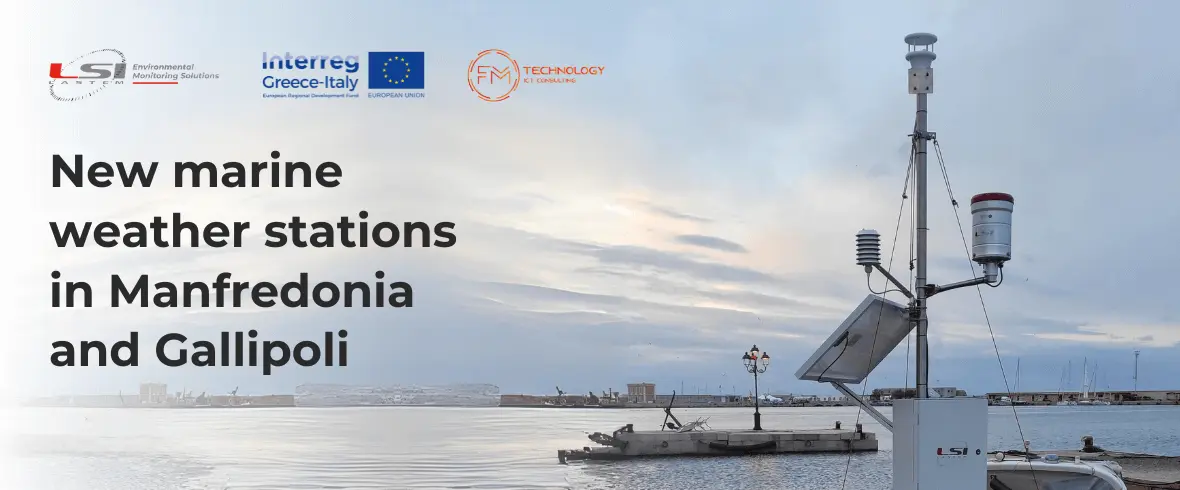The marine weather stations installed in the ports of Manfredonia and Gallipoli are equipped with advanced technologies for monitoring various climatic and chemical-physical parameters of the water. Each station is equipped with a multiparametric probe developed ad hoc by LSI LASTEM, which measures salinity, water level, pH and conductivity. This data is important for understanding the state of the marine environment and for making informed decisions.
New marine weather stations in the ports of Manfredonia and Gallipoli

In the field of environmental monitoring, weather stations play a fundamental role in collecting climate and environmental data. Recently, LSI LASTEM installed two marine weather stations in the ports of Manfredonia and Gallipoli, bringing innovation and precision in the monitoring of atmospheric and marine conditions in these strategic areas.
The Interreg project and collaboration
The installations are part of the European Interreg Italy-Greece 2021-2027 project, a cross-border cooperation initiative that aims to improve the quality of life in the participating regions. In this context, the ports of Manfredonia and Gallipoli have collaborated with UPI Puglia and Confcommercio Puglia to provide a useful information network for tourists and the Italian Navy. FMTechnology played a key role as system integrator, ensuring that weather stations were fully integrated into the local systems and personally managing the physical installation of the equipment.
Features of LSI LASTEM meteorological stations
High accuracy instruments and sensors
In addition to the marine multi-parameter probe, the weather stations have a number of advanced sensors. These include a rain gauge to measure precipitation, an ultrasonic anemometer to monitor wind speed and direction and a sensor to detect air temperature and humidity. These tools allow accurate and continuous data collection, providing essential information for both scientific research and daily operations in ports.
Benefits for tourism and the Italian Navy
The weather stations in Manfredonia and Gallipoli not only serve a scientific purpose, but also offer practical benefits for tourism and the Navy. The data collected helps tourists plan their visits according to the weather conditions, improving their experience. At the same time, in the port of Manfredonia, the Italian Navy can use this information for navigation and security operations.
Future prospects: other marine weather stations
The project, financed until 2027, should include the extension of the installations to other marinas and non-marinas, creating an increasingly wide and widespread meteorological monitoring network. The aim is to continuously improve the quality of available information, promoting sustainable management of marine and coastal resources.
Conclusion
The meteorological stations installed by LSI LASTEM in the ports of Manfredonia and Gallipoli represent an important step forward in environmental monitoring. Thanks to the collaboration with various local authorities and the support of the European Interreg project, these stations provide valuable data for both tourists and the Navy. With the prospect of further expansion, LSI LASTEM continues to be at the forefront of technological innovation for environmental monitoring.
